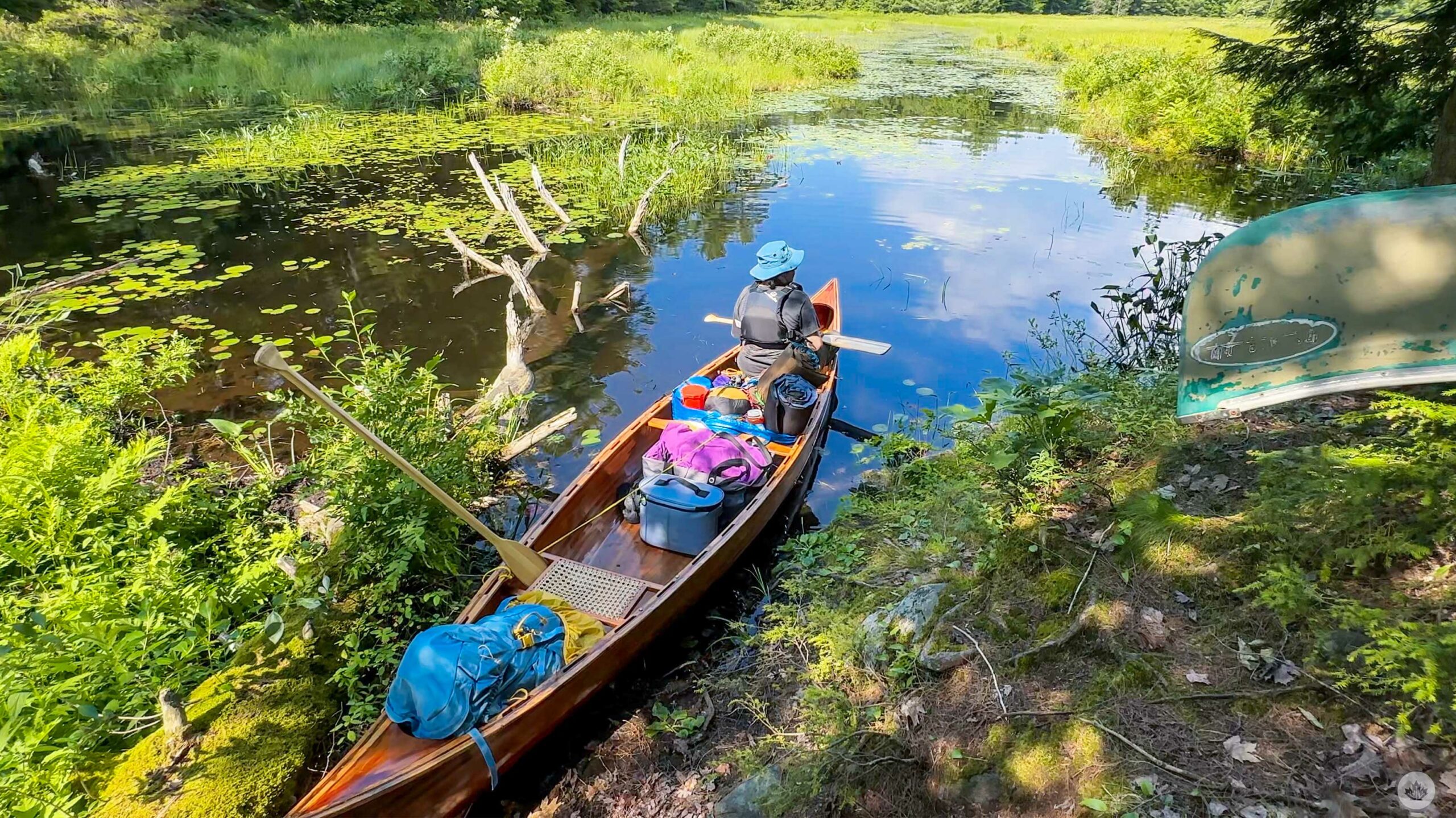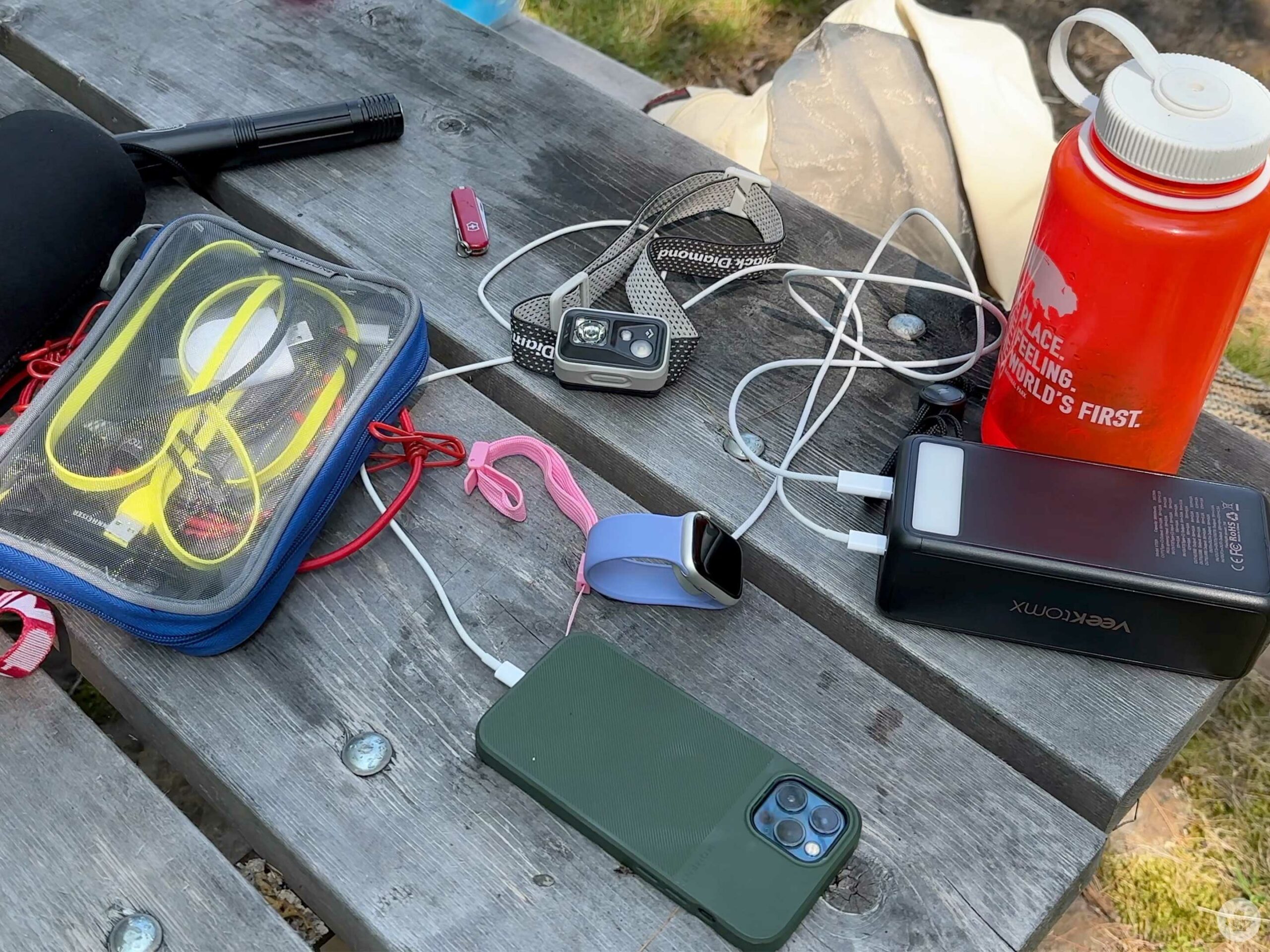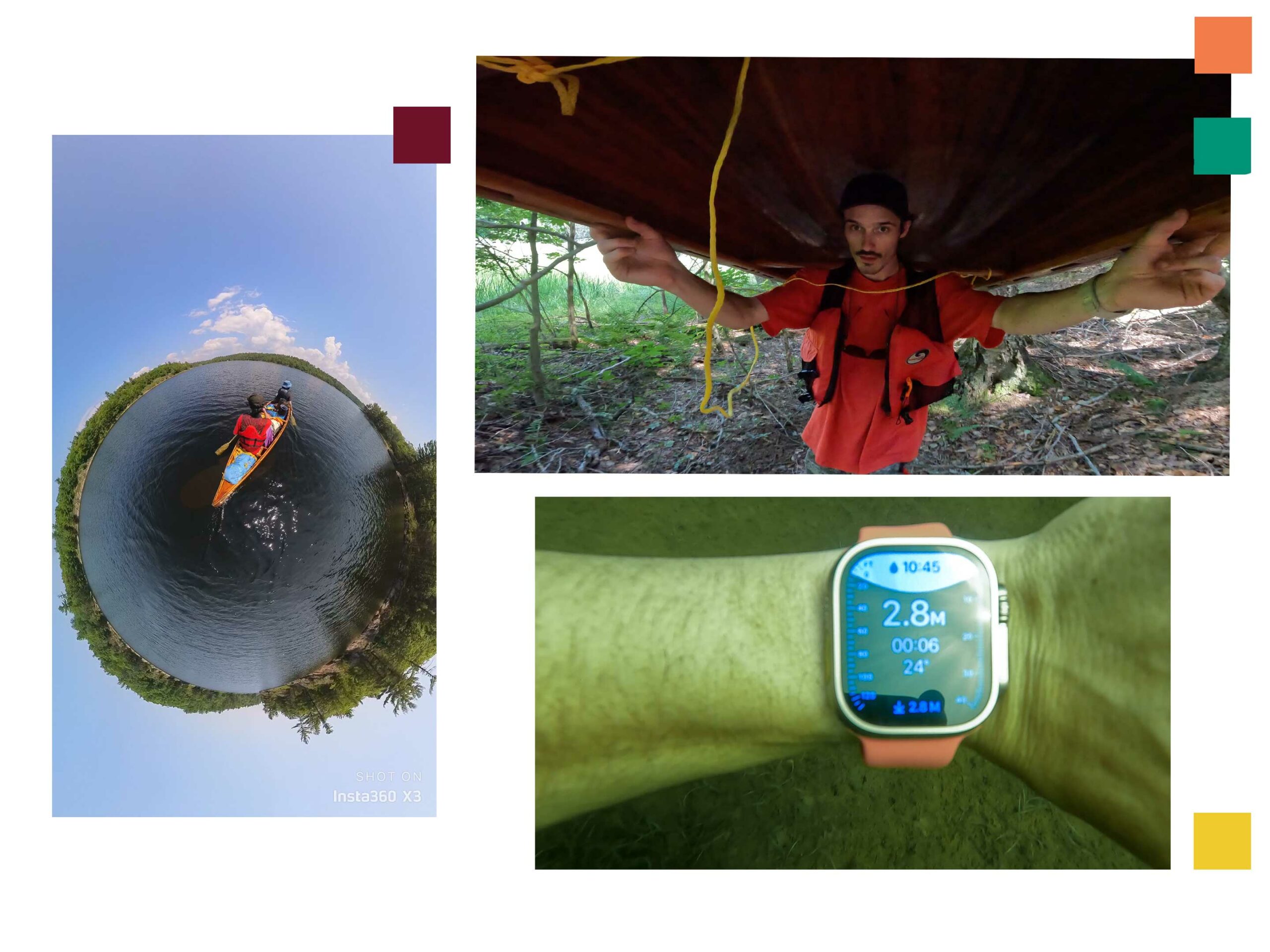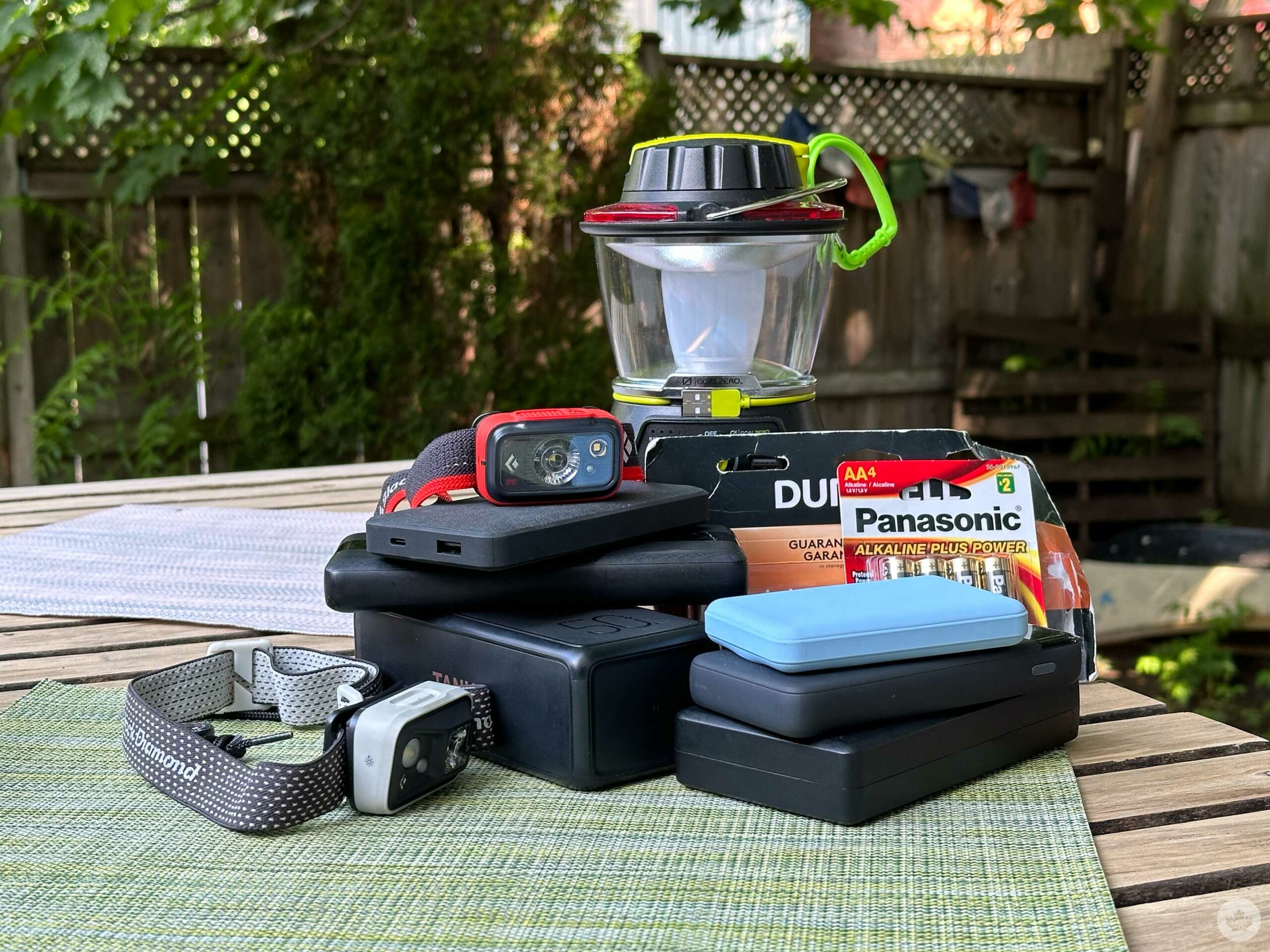
My partner Alex and I spent six days canoeing around Georgian Bay, Ontario, this summer on a trip to Massasauga Provincial Park. While I set out to test the Apple Watch Ultra in an outdoor environment (I have a story coming soon), my iPhone 14 Pro and its various features slyly became the star of the show alongside a few other gadgets we picked up at the last minute.
If you plan to go camping this summer, these tech tips and gear recommendations can help you plan for the best trip possible.
iPhone outdoors

As I wrote about before I left, I dived deep into the iPhone weather app since I had so much trust in Darksky before Apple bought it. During my week off, the app accurately predicted the rain once, called for light rain twice and missed the mark both times. We still used the app daily and closely monitored the radar for air quality and precipitation.
We very often used Apple Maps since it has a functional Apple Watch app. I could pin all my campsites and points of interest before I left, and then when we were paddling, I could either look it up on my phone or watch easily. The only real issue with this is that once you drop a pin and add it to your map, there’s no way to rename it, which is annoying. I accidentally made a typo in one and just had to live with it.

My favourite discovery on the trip was the Photos app’s built-in plant identification feature. All you need to do is take a quick snap of a plant, and after the image gets analyzed, it tells you what plant it is. This isn’t something I often do, but since most of our campsites featured small trails to discover, it was nice to spot-check plants I worried might be poison ivy. Sadly, this feature needs the internet to work, which won’t make it perfect for every camping trip or backcountry adventure, but it was beneficial for me.
I was also grateful for the iPhone SOS Satellite feature. While Alex and I maintained at least a bar of service in about 95 percent of the park, there are areas where that drops off. So knowing we were never truly off the grid if we needed emergency assistance offered a welcome piece of mind. If you want to learn more about the iPhone SOS feature, read our hands-on.
I brought a lot of cameras
Since I planned to write an Apple Watch Ultra feature, I packed too many cameras. I predictably ended up using my iPhone 14 Pro and Alex’s 12 Pro for most of our video work. Both worked great, and I still think the iPhone is an unbeatable vlogging tool. The fact that it’s waterproof is also great, but I wish I had gotten a floating case or keychain for added peace of mind in open water.
For still photos, I used my Fujifilm X-t3 and Alex’s 16-80mm f/4 lens. I packed the 10-24mm f/4 as well, but it never came out of the bag since I did all of my vlogging with the iPhone. That said, I was glad to have a real camera for taking photos of the Apple Watch Ultra. I was also able to snag a really fun picture of the moon, so it wasn’t a total waste lugging the camera around. I also had all the pricier items in soft sleeves to prevent them from getting damaged in my bag.

These photos are from the Insta 360 and the GoPro.
For fun B-roll, I also packed a DJI Mini 3, a GoPro Hero 8 for underwater shots and an Insta 360 X3 that I borrowed from Shevon Salmon. Out of all of the devices, I didn’t use the drone since it’s not allowed in the park. The GoPro was nice since we had extra batteries for it and ND filters, so it was easy to slap on a gorilla pod and leave it on the side of a trail or the canoe as we travelled.
The Insta 360 was the most fun to use and made vlogging super easy. You can hold it out on a selfie stick and walk, talk, or canoe, and then choose your favourite angles in post-production. This was my second time using a camera like this, and I’m finally starting to get addicted to the versatility.
To store my Fuji and some other gadgets, we had a waterproof rolltop bag that, in theory, would keep our gear dry and help it float if we flipped our boat. We didn’t flip, thankfully, but in safer testing, the bag repelled water and was big enough for all my cameras, an iPad and tons of batteries.
Lights and power

Since there have been so many fires in Ontario and Québec this year, most of Ontario is under a strict fire ban. That meant that instead of sitting by a fire at night, Alex and I needed to find something else to do in the dark and pack extra lights. We already had Black Dimeond Spot headlamps for lighting since they’re IPX8 waterproof, but we picked up a GoalZero Lighthouse 600 lantern, which blew us away. It was insanely bright at full power, but the battery would only last a few hours. However, at low, it was still more than bright enough to use at night, and it would last for around 12 hours and could be recharged via USB.
Beyond just hanging out or playing cards, our main after-dark activity was watching the Sopranos on an iPad. After watching numerous battery tests, it seemed like the 10th-Gen iPad was the model to bring, so we downloaded as much of the show as Crave would let us. To ensure we had enough juice to charge an iPad, two phones, multiple cameras and a big lamp, I sprung for this giant 56000mAh power bank to add to my collection of roughly five portable charges totalling 76,000 mAh. Altogether, this gave me a ton of juice, and we ended up having around 15,000 mAh left over at the end of the trip.

Using the iPad Smart Folio case and a string, we were able to convert our tent into a little theatre.
The giant 56,000 mAh brick was from a random company called Veektomx, and it seemed to live up to its advertised battery limit, but it wasn’t anything special. It also came with a small chip out of one of the USB bays, but it still seemed to work fine. For hikers, I’ll warn that all this tech was extremely heavy to carry around, so it’s not something I would recommend unless you’re using a canoe or kayak to get around on your backcountry adventure.
Other camping gear I liked that’s not tech related
- Lightweight hammock for two
- Camping burner
- Small water boiler
- Tiny folding chair
- Monopoly Deal (extremely underrated card game)
- Unlostify map (amazing for canoe trips)
- Water bag
- Compression bags
- Packing cubes (great as a pillow)
- Mountain House spaghetti (My favourite freeze-dried food brand)
- iPad folio case
- Ontario parks buff
- Tilly hat (keeping the sun off your neck is underrated)
- Tiny pocket knife
- Water purification tablets (metric)
- Simple filter cloth
- Thermocell mosquito shield
- REI Half Dome two plus tent
MobileSyrup utilizes affiliate partnerships. These partnerships do not influence our editorial content, though we may earn a commission on purchases made via these links that helps fund the journalism provided free on our website.
MobileSyrup may earn a commission from purchases made via our links, which helps fund the journalism we provide free on our website. These links do not influence our editorial content. Support us here.


